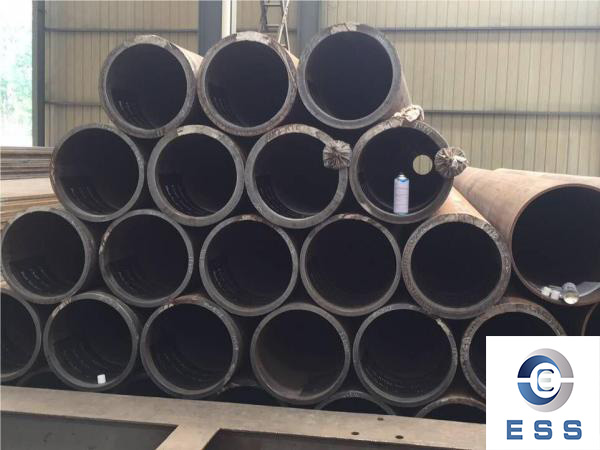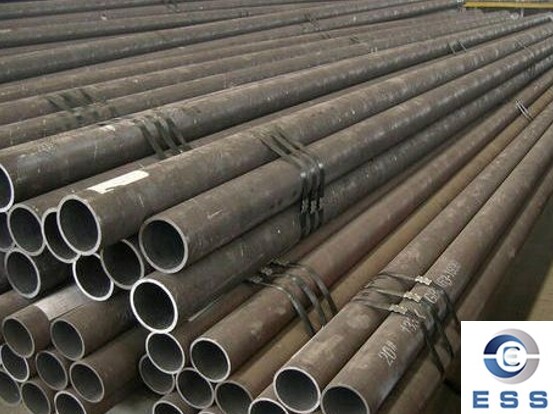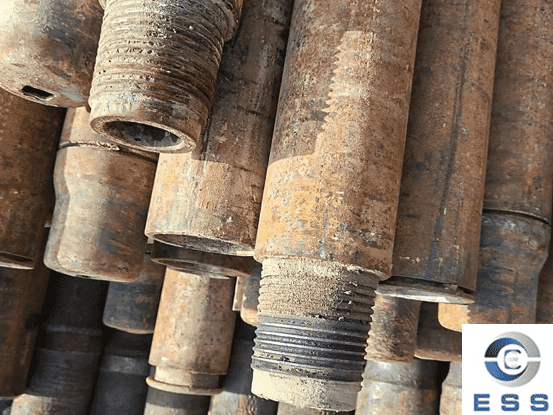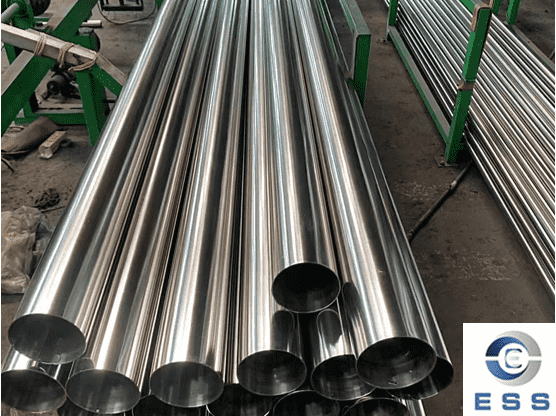Features of LSAW steel pipe structural steel pipe design
1. The pipe section has good geometric properties, the pipe wall is generally thin, the section material is distributed around the centroid, the section has a large radius of gyration, and has strong torsional stiffness; as a compression, pressure bending and two-way bending member, its load-bearing The force is higher, and the straightness and cross-sectional dimension accuracy of cold-formed pipes are better than those of hot-rolled open sections.

2. In terms of anti-hydrodynamic properties, the circular tube cross-section is the best, and the effects of wind and water flow are greatly reduced. Rectangular tube sections are similar to other open sections in this respect.
3. The steel pipe is a closed section; when the average thickness and cross-sectional area are the same, its exposed surface area is about 50% to 60% of the open section, which is beneficial to corrosion prevention and can save coating materials.
4. The node connection is suitable for direct welding without using node plates or other connectors, which saves both labor and materials.
5. The appearance is relatively beautiful, especially the pipe truss composed of steel pipe components, without redundant node connections, and has a strong sense of modernity.
6. If necessary, concrete can also be poured into the pipe to form a composite component.
Due to the above-mentioned advantages, steel tube structures can save about 20% of steel in industrial buildings and up to 50% in tower structures compared with structures made with open sections. The steel pipe structure can adopt a round pipe structure or a rectangular pipe structure according to the specific conditions such as the stress conditions of the components, supply conditions, manufacturing and processing conditions, and cost, or the two types of steel pipes can be mixed. When used in a mixed manner, the chords generally use rectangular tubes and the webs use round tubes; sometimes, the chords can also use I-beams or H-shaped steels, and the webs use rectangular or round tubes.
The mechanical properties have the best stability. Although local buckling is easy to occur when under pressure, the strength after buckling can be used to resist hydrodynamics, which is the most advantageous, with the smallest force. Under the same cross-sectional area, the surface area is the smallest, and it is corrosion-resistant and fire-proof without edges and corners; Fire-resistant and anti-corrosion materials are the most economical.
Pre-welding quality and welding essentials of LSAW steel pipe
Straight seam steel pipe is a steel pipe with the weld seam parallel to the longitudinal direction of the steel pipe. It is generally divided into metric electric welded steel pipes, electric welded thin-walled pipes, transformer cooling oil pipes, etc. The production process of straight seam steel pipe is simple, the production efficiency is high, the cost is low, and it develops rapidly. The strength of spiral welded pipes is generally higher than that of straight seam steel pipes. Welded pipes with larger diameters can be produced with narrower billets. Steel pipes with different diameters can be produced with the same billet width, but compared with straight seam pipes of the same length , the weld length was increased by 30% and 100% respectively, and the production speed was lower.
LSAW steel pipe pre-welding quality: Pre-welding quality includes joint quality and weld quality.
1. The seam (that is, the forming seam) has no wrong edge or the wrong edge is less than the specified value. Generally, the amount of wrong edge is ≤ 8% of the thickness of the steel plate, and the maximum does not exceed 1.5mm.
2. It is necessary to ensure that the weld has appropriate penetration depth and penetration. It is not only necessary to ensure that there is no cracking or burning after welding, but also to control the height of the weld so that the residual height of the external weld does not have an impact.
3. The welding seam is continuous and well formed to ensure the final external welding quality.
4. There are no welding deviations, pores, cracks, slag inclusions, burn-through, welding nodules and other defects on the back side of the weld, and the center deviation of the weld is less than 1mm.
5. No arc burn, small splash, no impact on the pipe groove end and surface quality.
6. The weld seam matches the base metal, and the physical and chemical properties of the weld metal meet the quality requirements.
The forming methods for manufacturing large-diameter straight seam welded pipes include roller forming (CFE), UOE forming, CE forming, etc. For most forming methods, the last process is to expand the full length of the tube blank after welding to improve the welding The shape quality and diameter expansion of steel pipes have become important processes in the production of large-diameter straight seam welded pipes to ensure the quality of finished pipes. Diameter expansion is a pressure processing technology that uses hydraulic or mechanical means to apply force from the inner wall of the steel pipe to expand the steel pipe radially outward. The mechanical method is simpler and more efficient than the hydraulic method. It adopts several international expansion processes for large-diameter straight seam welded controlled pipes. Mechanical expansion uses the segmented sector block at the end of the expander to expand in the radial direction, so that the tube blank can be expanded along the length direction. The plastic deformation of the entire pipe length is achieved step by step.
1. It is the initial circular stage. The sector blocks are opened until all sectors are in contact with the inner wall of the steel pipe. At this time, the radius of the circular tube in the steel pipe is almost the same within the step size range, and the steel pipe obtains a preliminary full circle.
2. Nominal inner diameter stage. The sector blocks start from the front until they reach the required position, which is the circumferential position of the finished tube for quality requirements.
3. Elastic recovery compensation stage. In the second stage position, the sector block will be further lowered until it reaches the required position, that is, the circumferential position of the elastic front steel pipe required by the process design.













 Eastern Steel Manufacturing Co.,Ltd not only improve product production and sales services, but also provide additional value-added services. As long as you need, we can complete your specific needs together.
Eastern Steel Manufacturing Co.,Ltd not only improve product production and sales services, but also provide additional value-added services. As long as you need, we can complete your specific needs together.










